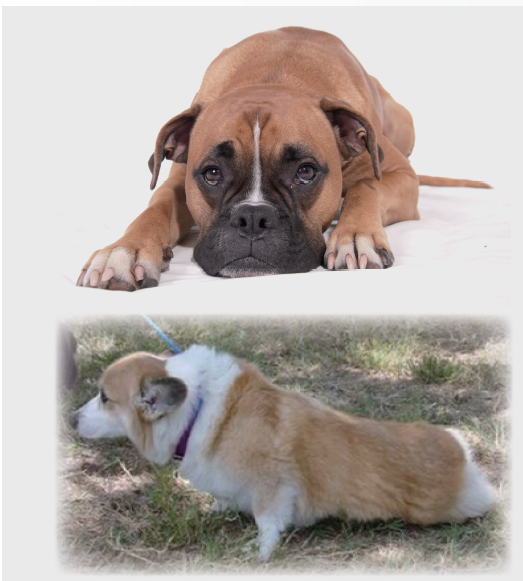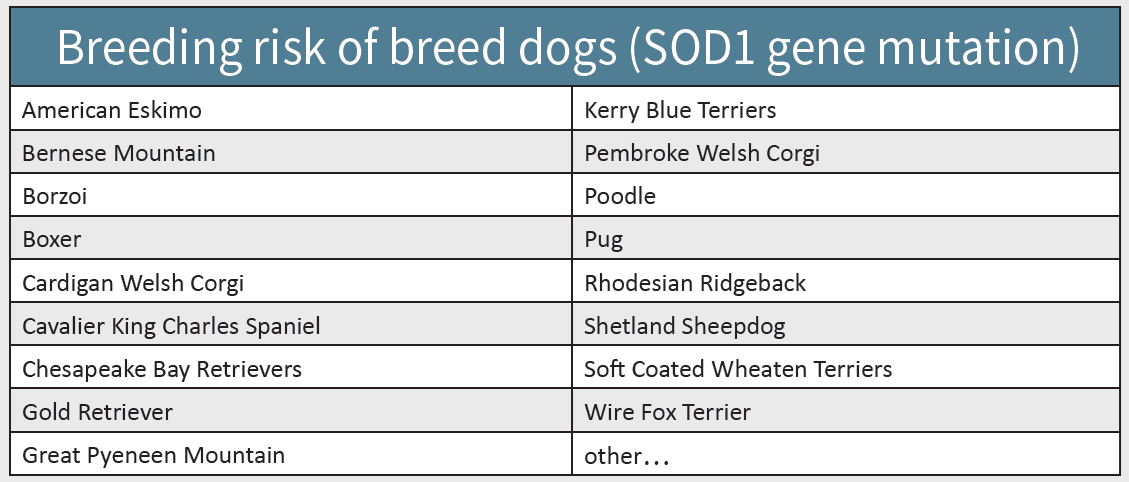Bioguard Corporation
Degenerative Myelopathy, DM is a progressive chronic degenerative disease of the central nervous system, which is a recessive genetic disease that mainly occurs in the spinal nerve, similar to human amyotrophic lateral sclerosis. It is known as lou gehrig’s disease. The age of onset of dogs is between 9 and 11 years old, and the common diseased breeds will be explained later.
Pathogenesis
Current research points out that the cause of DM is highly correlated with the mutation of superoxide dismutase-1 (SOD 1) gene. SOD mainly plays the role of scavenging free radicals in the body. It is an important antioxidant enzyme system in the body. It can convert the more active superoxide (Superoxide, O2–) into the less active hydrogen peroxide ( H2O2) reduces excessive peroxide production in the body; however, when the SOD 1 in the dog’s body is genetically defective, free radicals cannot be eliminated. The accumulation of excessive free radicals will cause the death of motor neuron cells and produce a lot of degeneration disease.

Clinical symptoms
The progression of the disease can be divided into four stages based on its severity:
- First Stage: From complete proprioceptive dysfunction to upper motor neuron spastic paresis.
- Second Stage: From difficulty in standing and walking to complete paralysis of the hind limbs.
- Third Stage: From neuronal paralysis of the lower body to paraplegia affecting the forelimbs.
- Fourth Stage: From neuronal paralysis of the lower limbs to loss of brainstem function.
Based on previous cases, the transition from stage 1 to stage 4 typically occurs within 6 to 9 months.
The cause of the disease remains unknown, and there is currently no medication available for treatment. However, physical therapy and rehabilitation can help slow the progression of spinal cord degeneration and reduce limb atrophy.
Early detection
In the early stages, monitor your dog for any clinical symptoms and schedule an outpatient examination at a veterinary hospital. To diagnose degenerative myelopathy (DM), further testing may include assessing the dog’s breed, conducting neurological examinations, analyzing cerebrospinal fluid, performing X-rays, MRI scans, CT scans, and genetic testing. Early detection and treatment are crucial. Research on DM has identified degenerative spinal neuropathy in 115 dog breeds, with 48 breeds showing a high risk of SOD1 genetic defects.

Note
According to statistics from the American Orthopaedic Association, Corgis have the highest rate of abnormalities among all breeds. Since genetic testing began in 2008, a total of 4,428 Corgis have been tested, with the following results: 13.1% were normal, 33.6% were carriers, and 53.3% showed mutations.

